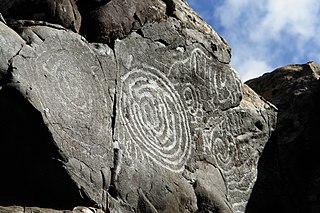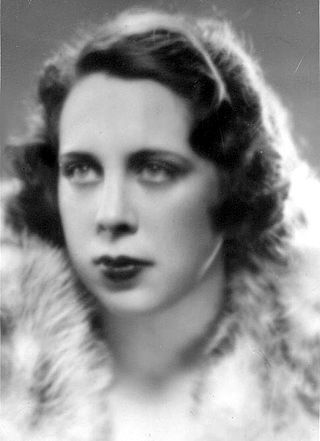Domingo Vega de la Rosa (born 1953, in Tenerife) is a painter from the Canary Islands, Spain. He lives and works in Los Realejos.
Contents
- Biography
- Early life
- The 70's
- Later development
- Artistic Movement
- Selection of exhibitions
- References






Domingo Vega de la Rosa (born 1953, in Tenerife) is a painter from the Canary Islands, Spain. He lives and works in Los Realejos.






Dominga Vega de la Rosa is born in Puerto de la Cruz, a town at the north coast of Tenerife. At the age of about thirteen, he got interested in painting because of an old encyclopaedia with black and white art reproductions. Later, he went to the library, to read books about modern art. His first exhibition was in 1977 in Palma de Mallorca.
He is an autodidact. After a study in tourism, he moved to Barcelona in 1974 and made a journey to the Netherlands where he visited the Frans Hals Museum in Haarlem. In musea he was trying to learn more about art. He felt a vocation as an artist.
In 1975 he had to come back to Tenerife for military service. This was the year Francisco Franco died. This event was very important for his personal development and also for life in the Canarian Islands. In his spare time he followed a course about technical drawing and read a lot of books about different types of art. He felt a special attraction to surrealism. Salvador Dalí and the Canarian painter Óscar Domínguez were his examples. After his seniority, he decided to concentrate on painting seriously. He moved to Madrid, where he achieved to sell his first works. In 1977 he got an opportunity to exhibit some of his drawings in a bookshop in Palma de Mallorca, after having been painting all summer in Manacor. Afterwards he returned to Tenerife.
In the seventies, the only university of the Canary Islands was in La Laguna, Tenerife. This was also the period of the new democracy in Spain. A formative period, where culture and politics were very important and La Laguna was a meeting point which facilitated contacts. In 1978 Vega has his first solo exhibition of paintings in La Laguna. Through this exhibition he became known at the Canarian Islands and from this time on, he was able to make a living as a painter.
From 1984, he lived in Las Palmas de Gran Canaria and Madrid. He studied the original paintings of Néstor Martín-Fernández de la Torre and got lessons in actual art by Guillermo Pérez Vilalta. From 1993 he travelled several times to New York City to experience the artistic environment of this city and to participate in exhibitions.
Alongside his artistic activities, he went to study history in 1997, at the UNED (Universidad Nacional de Educaciόn a Distancia). He obtained his degree in January 2003 and in 2005 he graduated in his specialty of Art History with the research about Figurative art in the Latin-Mediterranean countries.
In 2007, he started to write articles about art in a few weeklies of Tenerifes newspapers. He also gave a series of lectures about Actual art (2008) and a series about Art and movies (2009) at the Instituto de Estudios Hispánicos de Canarias in Puerto de la Cruz, Tenerife. In 2011 the Council of Culture of the government of the Canary Islands organized an exhibition of the paintings of Domingo Vega de la Rosa in La Laguna, which he called Anthropoflora Vernacula. This exhibition meant an official recognition of his work.
In a wide way, his first work is influenced by Surrealism. This is very popular in Tenerife, since André Breton presented an international exhibition in 1935. Vega says, his work can be fitted in the actual figurative painting. His early works coincide with the beginning of neo-figurative movements and movements such as Anachronism, Pittura Colta or Iper Mannerism, arising in Italy in the late 70's and early 80's. He has also starred symbolism in his works. He was inspired by French symbolist painters and English Pre-Raphaelites. In his recent paintings, the Canarian flora is always present.
Group exhibition "Grup Dimecres.1975-1980", Ses Voltes (Palma de Mallorca) [2] 
The Canary Islands, also known informally as the Canaries, are a Spanish autonomous community and archipelago in Macaronesia in the Atlantic Ocean. At their closest point to the African mainland, they are 100 kilometres west of Morocco. They are the southernmost of the autonomous communities of Spain. The islands have a population of 2.2 million people and are the most populous special territory of the European Union.

Tenerife is the largest and most populous island of the Canary Islands. It is home to 43% of the total population of the archipelago. With a land area of 2,034 square kilometres (785 sq mi) and a population of 978,100 inhabitants as of January 2022, it is also the most populous island of Spain and of Macaronesia.

Santa Cruz de Tenerife, commonly abbreviated as Santa Cruz, is a city, the capital of the island of Tenerife, Province of Santa Cruz de Tenerife, and capital of the Canary Islands. Santa Cruz has a population of 206,593 (2013) within its administrative limits. The urban zone of Santa Cruz extends beyond the city limits with a population of 507,306 and 538,000 within urban area. It is the second largest city in the Canary Islands and the main city on the island of Tenerife, with nearly half of the island's population living in or around it.

The Pyramids of Güímar are six rectangular pyramid-shaped, terraced structures built from lava stone without the use of mortar. They are located in the district of Chacona, part of the town of Güímar on the island of Tenerife in the Canary Islands, Spain. The structures have been dated to the 19th century AD and they may originally have been a byproduct of contemporary agricultural techniques. These pyramids stand as high as 12m.

The University of La Laguna is a public research university situated in San Cristóbal de La Laguna, on the island of Tenerife, Spain. It is the oldest university in the Canary Islands. The university has six campuses: Central, Anchieta, Guajara, Campus del Sur, Ofra and Santa Cruz de Tenerife.

The Canary Islands have been known since antiquity. Until the Spanish colonization between 1402 and 1496, the Canaries were populated by an indigenous population, whose origin was Amazigh from North Africa.

Manuel Mora Morales is a Canarian writer, filmmaker and editor. He completed his studies at the University of La Laguna on the island of Tenerife. He is the president of the Asociación de Editores de Canarias.

Fernando Estévez was a Spanish sculptor of the 18th century from La Orotava, Tenerife. He is considered one of the Canary Islands most noted sculptors.

The Cathedral of San Cristóbal de La Laguna or Catedral de Nuestra Señora de los Remedios is a Roman Catholic church in Tenerife, Spain. Begun in 1904 and completed in 1915, it is dedicated to the Virgin of Los Remedios. The cathedral is the mother church of the diocese, which includes the islands of Tenerife, La Palma, La Gomera and El Hierro in the province of Santa Cruz de Tenerife. It is therefore where the episcopal seat of the bishop of this diocese, currently occupied by Bishop Bernardo Álvarez Afonso. This is one of the most important churches of the Canary Islands.

José Comas Quesada was a Canarian painter born in the Puerto de la Luz, Las Palmas de Gran Canaria. He is considered one of the greatest exponents of watercolour painting, both in the Canaries and Spain, of the last quarter of the 20th century.

Bernard Romain son of René Margotton(born in Roanne, on 11 February 1944) is a French painter and sculptor.
Pintaderas are a form of stamp used by the pre-Hispanic natives of the Canary Islands. They were commonly made of fired clay. However, a number of wooden pintaderas have also been found. Most pintaderas come from archaeological sites in Gran Canaria, although natives from other islands in the Canarian archipelago used them too. Pintaderas were usually decorated with ornate geometric shapes, including zigzags, triangles, rectangles, squares and circles. These decorative motifs are similar to those found on pre-Hispanic Canarian pottery. Similar geometric patterns can also be seen in pre-Hispanic Canarian rock art

José Aguiar or José Aguiar García was a painter and muralist from La Gomera.
David Olivera is a photographer and director of photography from Lisbon, Portugal.

Dolores de la Torre Champsaur, better known as Lola de la Torre, was a Canarian musician and pioneer of musicology in the Canary Islands.

Elizabeth Murray, born Elizabeth Heaphy, was a British watercolourist. She primarily painted portraits and landscapes of the Canary Islands, where she lived for ten years. She was a member of the Royal Institute of Painters in Water Colours, and in 1857 was one of the founders of the Society of Female Artists in London, serving on its first committee.
As in the rest of Spain, the majority religion in the Canary Islands is the Catholic Church. The Catholic religion has been the majority since the Conquest of the Canary Islands in the fifteenth century. This religion would largely replace the Canarian aboriginal religion through the prohibition of the latter and syncretism. According to a survey conducted in 2019, Canary Islands is the fifth autonomous community in Spain with the highest percentage of people who declare themselves to be Catholics after the Region of Murcia, Extremadura, Galicia, Aragon, and Castile and León. 76.7% of the population is Catholic.
María Rosa Alonso was a Spanish professor, philologist, essayist from the Canary Islands.

Alfred Diston was a British merchant and writer on a wide variety of subjects who lived in Puerto de la Cruz, Tenerife, between 1810 and 1861.